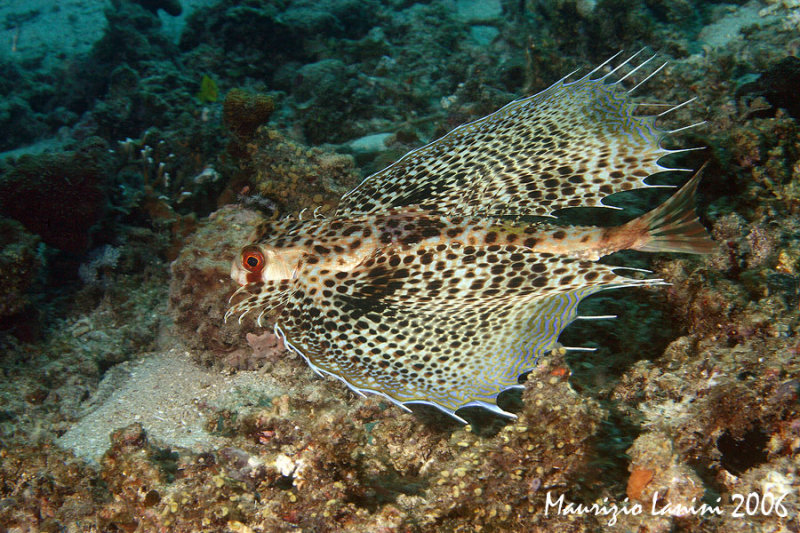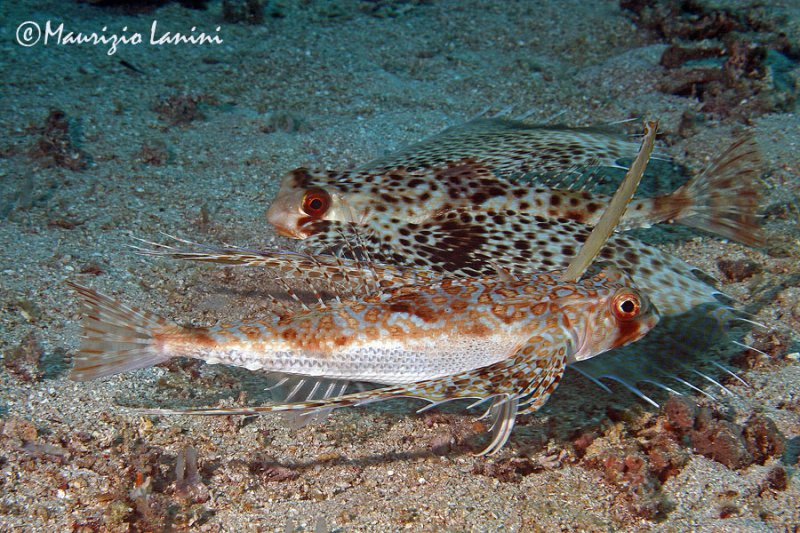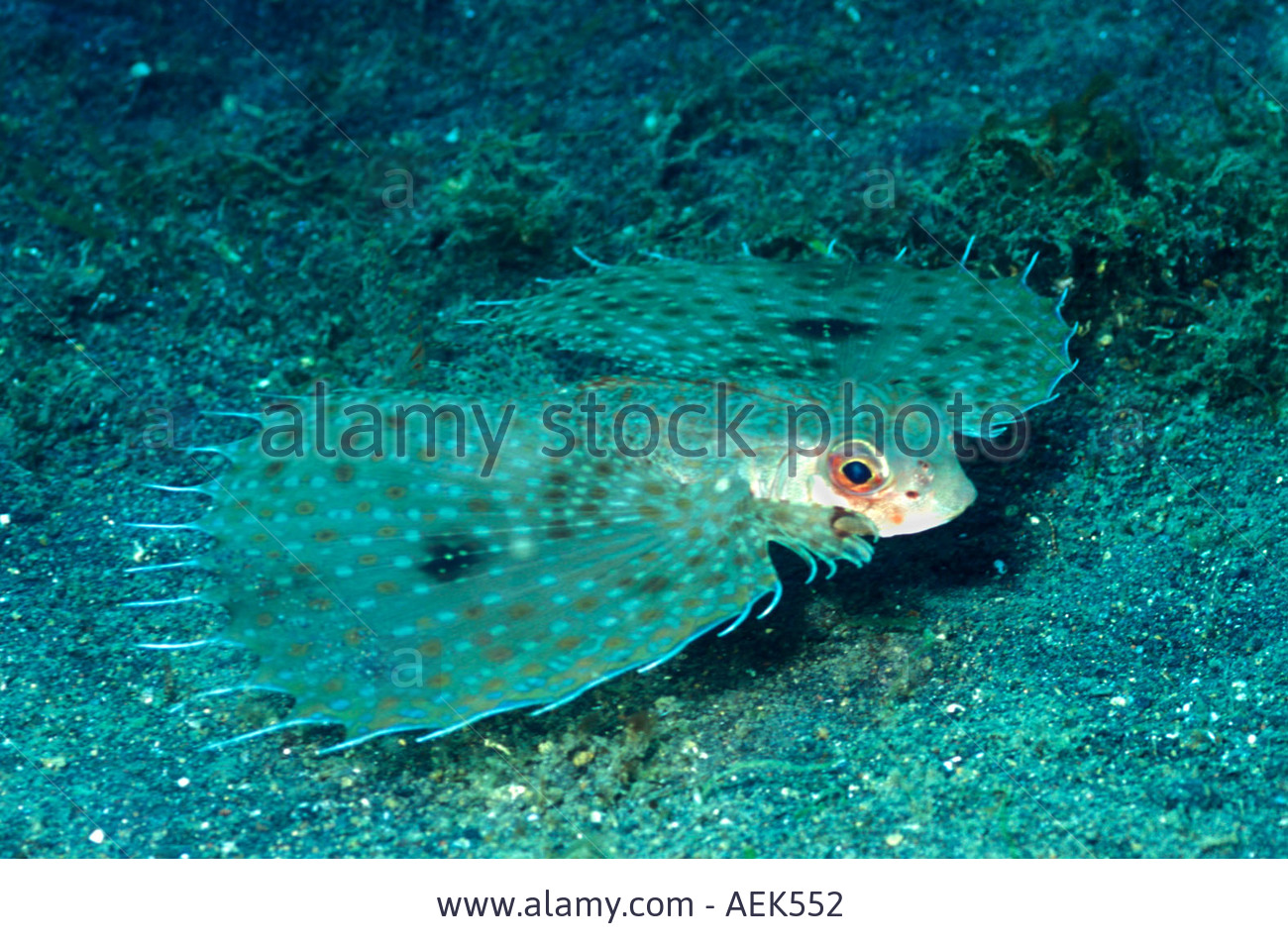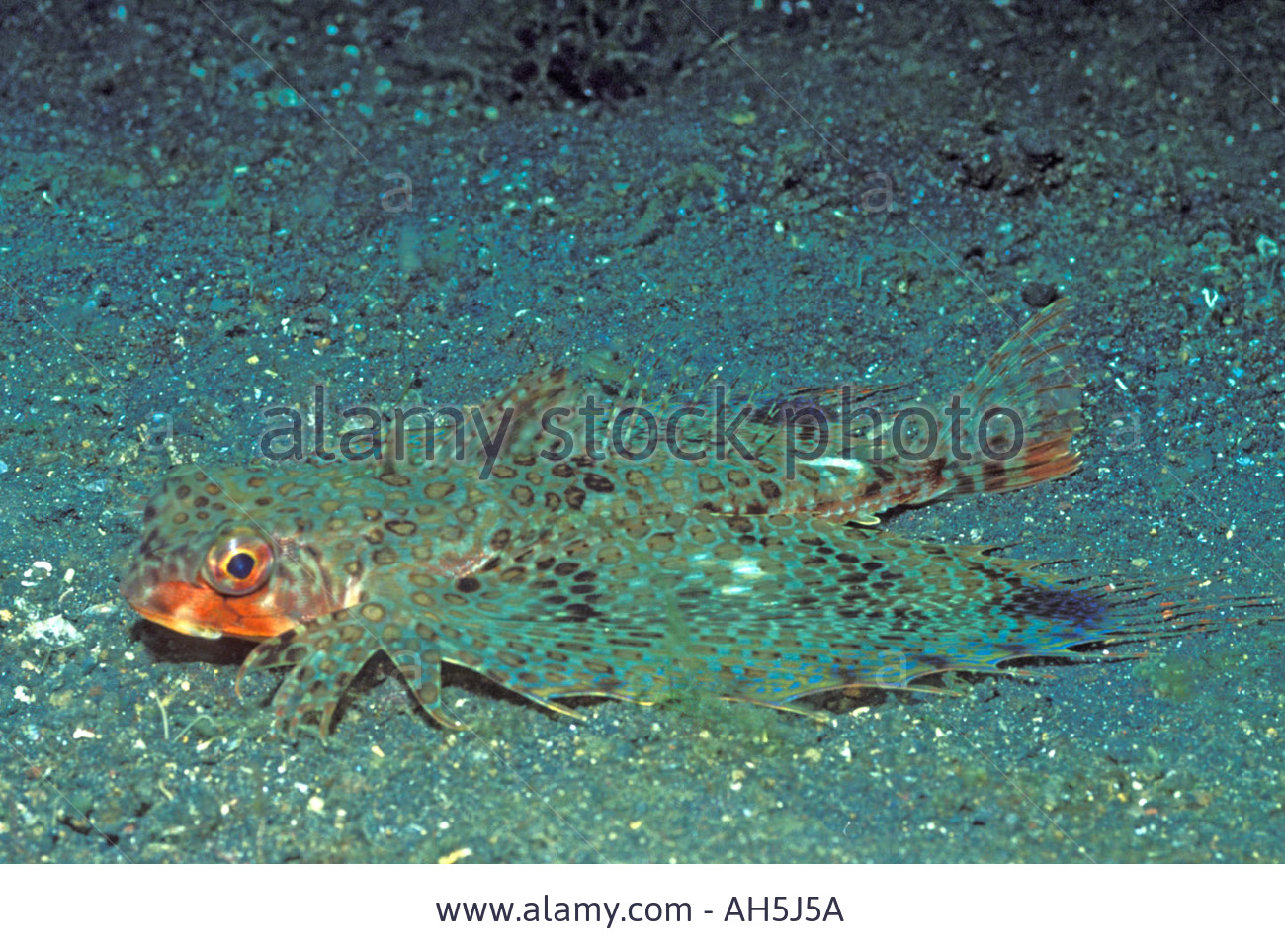
Dactyloptena orientalis
FAMILY
Dactylopteridae
TAXONOMY
Dactyloptena orientalis Cuvier, 1829, Red Sea.
OTHER COMMON NAMES
French: Grondin volant oriental; Spanish: Alуn oriental; Japanese:
Semihфbф.
PHYSICAL CHARACTERISTICS
Grows to 15.7 in (40 cm) maximum length. Body moderately
elongate with large, heavily armored head and greatly expanded
winglike pectoral fins. Head broad and blunt, with
large eyes and a small subterminal mouth. A unique fish that
is gray to light brown, with dark brown and black spots on
its back and upper sides. The elongate first dorsal spine is
well separated from the second dorsal spine and the remainder
of the first dorsal fin. The enlarged pectoral fins also are
spotted, with striking blue wavy lines near the margins of the
fins.
DISTRIBUTION
This widely distributed species ranges from the western Indian
Ocean and Red Sea east to the Polynesian and Hawaiian Islands.
HABITAT
A benthic species that spends most of its time on sandy bottoms.
BEHAVIOR
A bottom-dwelling fish that quickly expands its pectoral fins as
a defensive
BEHAVIOR
.
FEEDING ECOLOGY AND DIET
Feeds primarily on benthic crustaceans, clams, and fishes that
it stirs up as it “walks” along the seafloor.
REPRODUCTIVE BIOLOGY
Little is known about the
REPRODUCTIVE BIOLOGY
of the Oriental
flying gurnards in the wild, although one aquarium wholesaler
has started offering aquacultured flying gurnards to
aquarists.
CONSERVATION STATUS
Not listed by the IUCN.
SIGNIFICANCE TO HUMANS
A specialty item in the aquarium trade and incidentally fished
in the Indo-Pacific, but not commercially collected for consumption.
Other popular Animals
Photo Gallery of - Oriental helmet gurnard





 Animalia Life
Animalia Life